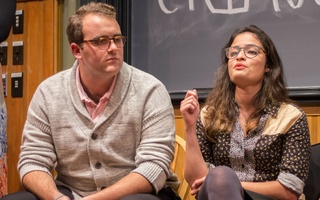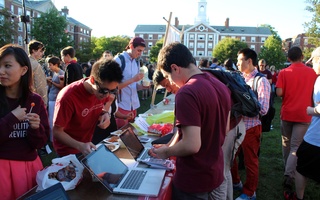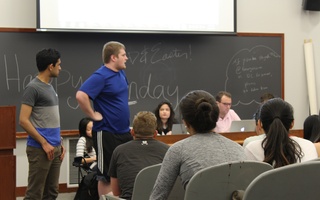The Office of Student Life and Undergraduate Council recently reformulated the process by which students can create recognized organizations in an effort to decrease redundancy in the extracurricular composition of the College. Under the new framework, nascent clubs will exist in an intermediate state for a year before the UC, as advised by the OSL, will vote whether or not to grant them fully recognized status, along with the associated resources and privileges.
We commend the OSL and the UC for tackling this important issue. The egregious amount of overlap in the College’s 442 recognized organizations fails to allow the UC to allocate funding as effectively as possible, and this problem can spread student talent and passion about a given issue too thinly.
Nonetheless, there are serious flaws in the OSL and UC’s new plan. Its singular focus on ensuring new clubs are not superfluous makes no effort to address redundancy within the existing body of College-approved organizations, and will ultimately be ineffective in club consolidation as long as it does not address existing problems. A better policy would enable the OSL and UC to take a critical look at the 442 clubs that currently exist, and aim to decrease overlap in their functions by spearheading relevant mergers and cuts.
The other side of the OSL and UC’s plan that which pertains to new organizations is likewise problematic. While we appreciate that these governing bodies aim to only allow the formation of unique clubs with auspicious futures, the relative dearth of clarity regarding the year-long intermediate period is cause for concern. Without adequate support—which must go beyond the meetings with administrators new clubs must have per the policy—and provision of financial assistance and the ability to book spaces, clubs that might be favorably reviewed a year into their existence may unfortunately not survive that long.
The methods by which the UC will implement its newfound power also have the potential to be worrying. As we have argued, the UC Rules Committee’s increased oversight of extracurricular life on campus necessitates that it be held accountable for using its influence properly. We therefore call on the Committee to release and publicize quantitative standards, such as those regarding membership size, by which it will evaluate would-be recognized clubs. These would be in lieu of qualitative standards that would allow UC members to nix clubs based on disagreements with clubs’ stated aims.
The College visibly prides itself on its diverse, comprehensive body of student organizations and on students’ ability to fill deficiencies they perceive by creating clubs of their own. The OSL and UC would do well to revise their policy to scrutinize existing clubs and to ensure that new clubs are adequately resourced for success. They must also clarify and make fair the standards by which the UC will judge clubs. Only through these revisions to the existing policy can the OSL and UC consolidate and strengthen Harvard’s extracurricular life.
This staff editorial solely represents the majority view of The Crimson Editorial Board. It is the product of discussions at regular Editorial Board meetings. In order to ensure the impartiality of our journalism, Crimson editors who choose to opine and vote at these meetings are not involved in the reporting of articles on similar topics.
Read more in Opinion
Loving Me BackRecommended Articles
-
 In Historic Move, Harvard to Penalize Final Clubs, Greek Organizations
In Historic Move, Harvard to Penalize Final Clubs, Greek Organizations -
The Need for NuanceMost significantly, we are troubled by the University’s choice to group male final clubs, female final clubs, fraternities, and sororities.
-
 Undergraduate Council Will Play Expanded Role in Club Recognition Process
Undergraduate Council Will Play Expanded Role in Club Recognition Process -
 New Clubs Will Have One Year Trial Period
New Clubs Will Have One Year Trial Period -
 UC To Partially Fund Yardfest Tailgates
UC To Partially Fund Yardfest Tailgates













